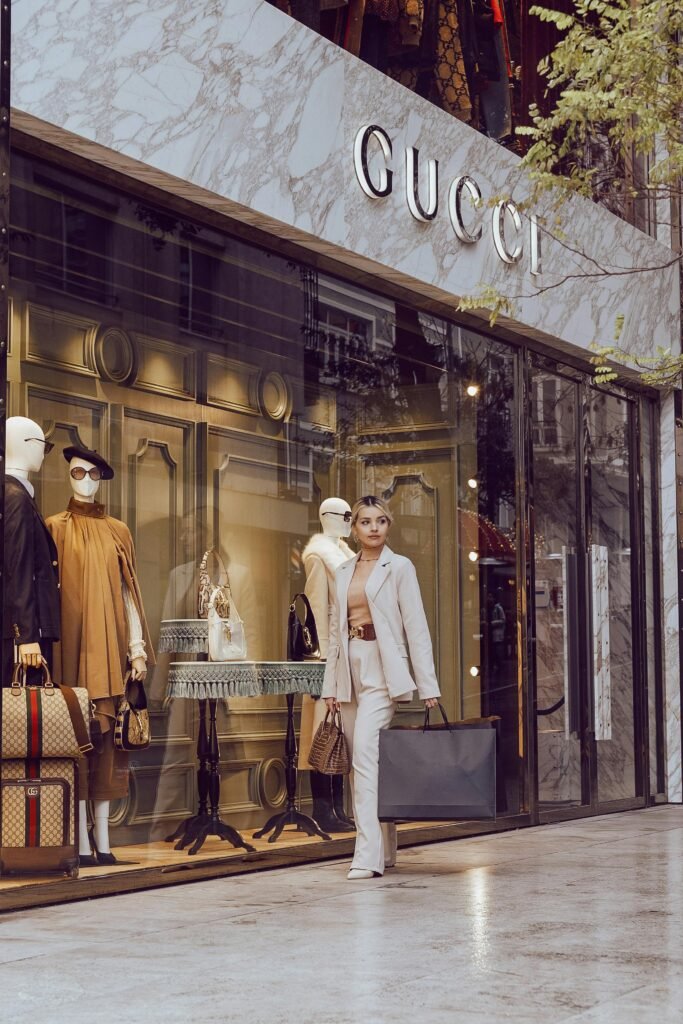Introduction: Zara vs H&M and the Fast Fashion Showdown
In the ever-changing world of fast fashion, two names lead the race — Zara and H&M. These retail powerhouses have dominated high streets and malls worldwide, delivering trendy clothes at wallet-friendly prices.
But when it comes to shopping smart — who actually gives you better value? Is Zara worth the extra money? Or does H&M offer a better deal?
In this detailed guide, we’ll break down everything — from price and style to quality, sustainability, and inclusivity — to help you confidently decide in the Zara vs H&M debate.
🧵 Zara vs H&M: Brand Background & History
Zara: Fast Fashion Royalty from Spain
Zara was launched in 1975 in Spain by Amancio Ortega, under the Inditex Group, which is now the largest fashion retailer in the world. What makes Zara stand out? Its ability to turn runway inspiration into store-ready products in just 2–3 weeks.
Anecdote: A fashion student once said, “I saw Bella Hadid wear a red corset top at Fashion Week, and within 10 days, Zara had a near-identical version in-store. That’s wild!”
Zara aims for a minimalist, upscale feel — often compared to luxury brands like Céline or The Row — but at much lower prices.
H&M: Swedish Style That’s for Everyone
H&M, founded in 1947, took a different approach. While Zara chases fashion-forward silhouettes, H&M focuses on affordability, accessibility, and mass appeal. With collaborations from designers like Balmain and Giambattista Valli, H&M made high fashion mainstream.
Fun Fact: H&M stands for “Hennes & Mauritz,” and was originally a women’s clothing store!
💰 Zara vs H&M: Which Is More Affordable?
Let’s get real — price matters.
H&M: Budget-Friendly for Everyday Wear
H&M’s pricing caters to students, teens, and bargain hunters:
T-shirts: $5–$10
Jeans: $20–$30
Dresses: $25–$40
It’s the go-to store for affordable basics.
Zara: Slightly More Expensive, But Polished
Zara sits in the mid-range pricing zone:
Tops: $15–$40
Trousers: $40–$70
Blazers and Coats: Often over $100
But Zara tends to look and feel more high-end.
Anecdote: One shopper shared, “I go to H&M for work basics but splurge at Zara when I want something elegant for an event.”
🏁 Verdict: If you’re budget-conscious, H&M wins. If you want elevated fashion, go for Zara.
👗 Zara vs H&M: Style, Trends & Collections
Zara: Catwalk-Inspired, Sleek, and Modern
Zara is known for its quick fashion cycle — updating collections twice a week. If you follow influencers or love minimalist, European chic looks, Zara delivers. Think sharp blazers, structured dresses, and bold statement pieces.
H&M: Fun, Diverse, and Casual
H&M caters to a wider audience. From basics to glam wear, they offer:
Divided Collection for Gen Z
Modern Classic for professionals
Collaborations with luxury designers
Their variety can be overwhelming, but it’s a treasure hunt for style lovers.
🏁 Verdict: Want trendy designer-inspired fashion? Choose Zara. For variety and casual comfort, go with H&M.
🧵 Zara vs H&M: Quality Check — What Lasts Longer?
Zara: Better Construction, Better Materials
Zara uses more structured fabrics, precise stitching, and fashion-forward cuts. Their clothes are made to look expensive, even if they’re not.
H&M: Affordable, But Sometimes Cheap
H&M has improved in recent years, but some items — especially in lower price brackets — may fade, stretch, or lose shape quickly.
Anecdote: “I had an H&M tee that lost shape after 2 washes. But my Zara knit from last winter still feels new.”
🏁 Verdict: For longevity and quality, Zara wins.
🌍 Zara vs H&M: Sustainability Showdown
H&M: Taking Big Green Steps
H&M launched its Conscious Collection using organic and recycled materials. They also have a garment recycling program in every store.
They aim to be climate positive by 2040 and fully circular by 2030.
Zara: Catching Up, But Fast Fashion Model Hurts
Zara’s Join Life initiative promotes sustainable production and plans to use 100% eco-friendly materials by 2025.
However, Zara’s constant new arrivals increase environmental strain, which critics argue undermines its green goals.
🏁 Verdict: H&M leads in eco-friendly practices — though both still have room to grow.
📐 Zara vs H&M: Size Inclusivity and Fit
H&M: Inclusive and Accessible
H&M offers extended sizes up to 4XL in some lines, with dedicated plus-size sections in-store and online.
Zara: Limited Size Range
Zara usually offers XS to XL, but fit runs small, especially in women’s wear.
🏁 Verdict: H&M wins on size inclusivity.
🛍️ Zara vs H&M: Shopping Experience & Returns
Online Shopping:
Zara’s website is clean but can be hard to navigate.
H&M’s website is intuitive, with easy-to-use filters and size guides.
Returns:
Zara has a 30-day return policy, but often requires repackaging and online processing.
H&M allows in-store and online returns, no questions asked.
Anecdote: “Returning a top to H&M took me 2 minutes. Zara had me chasing QR codes for half an hour!”
🏁 Verdict: H&M provides smoother service.
✅ Zara vs H&M: A Step-by-Step Shopping Guide
🛒 Step 1: Define Your Need
For basic wardrobe essentials, go to H&M.
For elevated, fashion-forward looks, try Zara.
🧾 Step 2: Budget Check
Under $50 budget? H&M.
$100+ outfit range? Zara offers better style.
👠 Step 3: Longevity Matters
Want clothes that last? Go with Zara.
Short-term wear? H&M is fine.
🌱 Step 4: Go Green
Choose H&M Conscious or Zara Join Life for eco-options.
📏 Step 5: Sizing
Curvy or plus-size? H&M has you covered.
Petite or standard sizing? Zara should fit.
🔚 Final Verdict: Who Wins in Zara vs H&M?
It’s not about which is better, but which is better for you.
🏆 Choose Zara if you:
Love runway-inspired fashion
Want polished looks
Care about long-lasting clothes
🏆 Choose H&M if you:
Need affordable basics
Appreciate sizing diversity
Care about sustainability
Here’s how to shop smart:
Build your everyday wardrobe at H&M.
Add statement pieces and fashion-forward looks from Zara.
Mixing both gives you the best of both worlds — value and style.



